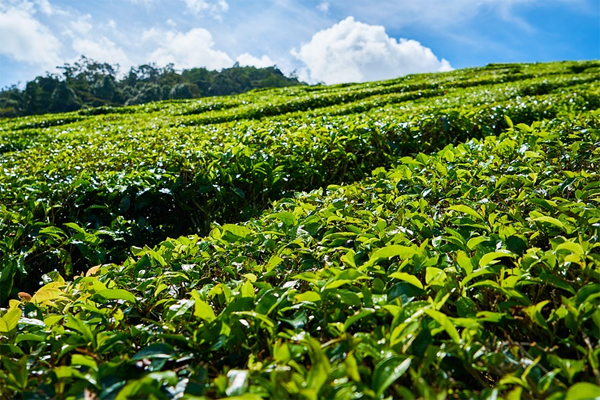Characteristics of the Tea Plant
Traditional Chinese tea plants are usually divided into two classes, and distinguished a Thea Bohea and Thea Viridis, the former being most suitable for black teas, and the latter for green teas; and black and green teas have been indiscriminately made from the leaves of either.
A tea shrub of Chinese origin now before us, growing among a host of common American plants, displays no special characteristics which would attract attention to itself. It resembles an orange plant. Its developed leaves are smooth on the surface, leathery in texture, dark green in color, with edges finely serrated from point almost to stalk. They are without odor, and when chewed in the mouth, have a mild and not unpleasant astringency, but no other perceptible flavor. A leaf of any familiar domestic plant, such as the lilac, the plantain, or the apple, has a stronger individuality to the sense of taste, than this green leaf of the tea plant.
How was the hidden mystery of its incalculable value to mankind revealed? What premonition guided the Chinese discoverer to the preparatory treatment and delicately graduated firing process which develops tea's precious flavors? And does not this unsolved question suggest the possible existence of other plants, growing, perhaps, at our very doorsteps, possessing rare and unrecognized virtues?
In form, tea leaves have been compared by writers to leaves of the privet, the plum, the ash, the willow, but close observers know that not only do leaves of the species just mentioned represent different types, but that important variations in form occur in leaves of the same species, and in leaves growing on a single tree or plant. The tea plant is subject to the same vagaries, and any description by comparison will be misleading.
All varieties of the tea plant bear a pure white flower, averaging, say 1 1/4 inches in diameter, and resembling very closely our single white wild rose blossom.
Its bunch of bright yellow stamens is so bushy and showy in some varieties that careless travelers have been led to report the flower as yellow in color, which is never the case.
In some Chinese plants, and in those of India, tea blossoms are very fragrant, and they have been used for scenting tea leaves in India, if not in China, as other flowers are used by the Chinese. In India a perfume has been distilled from tea blossoms; and a valuable oil is expressed from the very oily seeds. The long tap root of the tea plant renders it difficult to transplant.
In China, tea is commonly cultivated in small patches or fields, large tea fields being the exception. The nature of Chinese inheritance laws and customs which tend to continual subdivision of land, may be one of the causes of this state of affairs. The least area of spare ground is frequently utilized by the small farmer or the cottager for the cultivation of a dozen or more tea shrubs, from which they procure tea for their own use, or realize a small sum by sales of the green leaves to tea traders. Many a rocky hillside or mountain slope, otherwise waste ground, is terraced so as to detain the rains and meagre soil within its inwardly inclined banks and trenches, and made to yield a valuable crop of tea. Indeed, some of the finest flavored Chinese tea, of fabulous value where they are produced, are grown in seemingly inaccessible retreats among precipitous mountains.

Education
Many people benefit from knowledge and interesting facts...Did You Know?
When precipitation falls over the land surface, it follows various routes. Some of it evaporates, returning to the atmosphere, and some seeps into the ground (as soil moisture or groundwater). Groundwater is found in two layers of the soil, the "zone of aeration," where gaps in the soil are filled with both air and water, and, further down, the "zone of saturation," where the gaps are completely filled with water. The boundary between the two zones is known as the water table, which rises or falls as the amount of groundwater increases or decreases.
The water table is the top of the zone of saturation and intersects the land surface at lakes and streams. Above the water table lies the zone of aeration and soil moisture belt, which supplies much of the water needed by plants.
Throughout the hydrologic cycle, there are an endless number of paths that a water molecule might follow.

